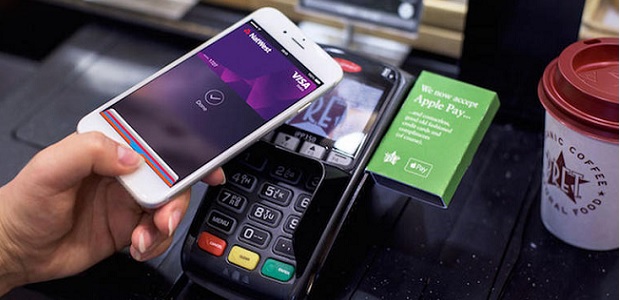
Apple Inc is struggling to persuade Australia’s big banks to sign up for its Apple Pay mobile payment system, people familiar with the matter say, as the technology giant works from an unfamiliar negotiating position: weakness, not strength.
Apple rolled out the service in Australia last month with support for payment cards issued directly by American Express Co. The move is part of the iPhone supplier’s global drive to extend its mobile consumer electronics prowess into financial services, with a China launch expected soon.
But the firm has yet to strike a deal with any of the four main banks – ANZ, National Australia Bank (NAB), Commonwealth Bank and Westpac. That sets it adrift from 80 percent of consumers using mobile payments systems linked to other credit cards in a market Westpac sees as being worth more than $2 billion this year.
„The banks here feel like they’ve done the hard work in bringing contactless payments already to Australia and Apple is just going to come in…and eat their lunch,” said Foad Fadaghi, managing director of technology research firm Telsyte.
Apple declined to comment, citing company policy.
The firm has faced – and eventually dealt with – hurdles rolling out the service in other markets such as the United States, where contactless payments are rare, and in Britain, where it faced resistance from big banks over fees before relenting.
Yet analysts say Australia’s banks are unique, having forged ahead of the banking industry elsewhere in developing contactless payments systems. Like the people familiar with negotiations between Apple and the lenders, sector watchers say the banks feel little sense of urgency to conclude a deal.
A source at one of the Australian banks, who wasn’t authorized to speak publicly, said Apple did not understand the market and was trying to fill a gap that does not exist.
„It’s a different world here,” he said. „Where’s the value in this for the banks?”
The lenders’ approach is one that could also stymie other tech players potentially interested in rolling out payments systems in Australia, including Apple rival Samsung Electronics Co, now expanding its own Samsung Pay system.
As the negotiations drag on, analysts say Apple may seek to build momentum for Apple Pay through partnerships, software and feature upgrades to entice consumers.
Apple Pay gives the consumer electronics supplier a chance to tie customers more tightly to the popular iPhone, as well as the Apple Watch. In return for the convenience of making payments from smartphones or smartwatches, Apple takes a tiny slice from each retail transaction.
Apple’s iOS operating system was used in roughly 37 percent of mobile devices sold in Australia in September, according to data published by research firm Kantar Worldpanel, second only to Google’s Android system.
Contactless payments have also skyrocketed since their introduction in 2010, accounting for 22 percent of face-to-face transactions in 2014, according to a Reserve Bank of Australia report. That’s because the major Australian banks already offer sophisticated smartphone apps for mobile payments and contactless payment on their bank cards, without significant competition from tech firms.
Source: Reuters
Banking 4.0 – „how was the experience for you”
„So many people are coming here to Bucharest, people that I see and interact on linkedin and now I get the change to meet them in person. It was like being to the Football World Cup but this was the World Cup on linkedin in payments and open banking.”
Many more interesting quotes in the video below: